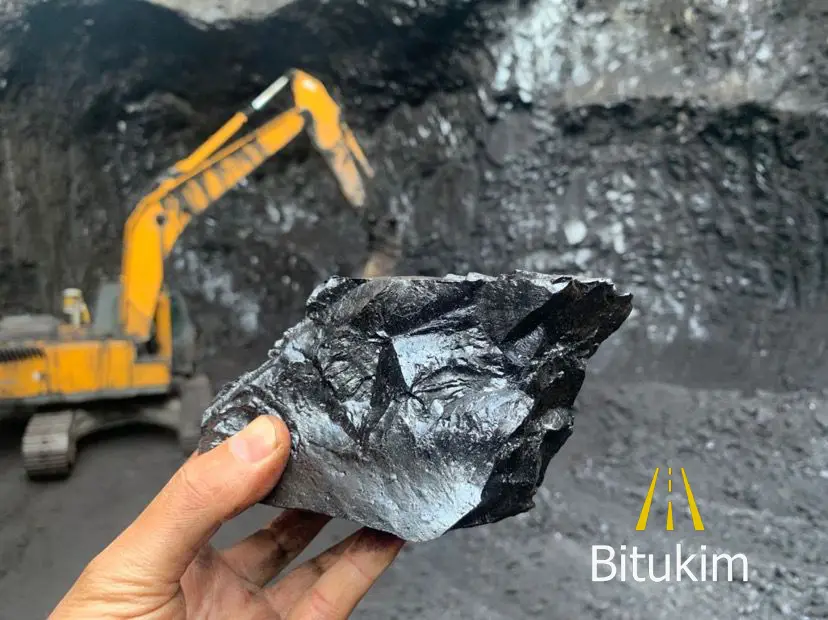
Gilsonite and shale fluid loss control, Gilsonite is highly effective in controlling fluid loss when drilling through shale formations. Fluid loss control is critical in shale drilling because excessive fluid invasion into the formation can cause wellbore instability, swelling, and other operational issues. Gilsonite helps to mitigate these problems by forming a strong barrier that reduces fluid loss and protects the shale formation.
How Gilsonite Controls Fluid Loss in Shale Formations:
- Sealing Micro-Fractures and Pores:
- Plugging Action: Gilsonite acts as a natural plugging agent by sealing micro-fractures and pore spaces in the shale. This sealing action prevents drilling fluids from entering the shale formation, reducing the amount of fluid lost to the formation.
- Creating an Impermeable Barrier:
- Protective Coating: When added to drilling mud, Gilsonite forms a thin, impermeable barrier on the wellbore walls. This barrier limits fluid invasion by isolating the shale from direct contact with the drilling fluids, maintaining the integrity of the wellbore.
- Minimizing Hydration of Water-Sensitive Clays:
- Swelling Prevention: Shale formations often contain water-sensitive clays, such as smectite, that swell upon contact with water. Gilsonite’s ability to seal the shale surface reduces the exposure of these clays to water-based drilling fluids, preventing swelling and maintaining shale stability.
- Enhancing Mud Properties:
- Improved Filtration Control: By reducing fluid loss into the formation, Gilsonite helps to maintain the desired mud weight and rheological properties of the drilling fluid. This contributes to better control of mud properties, which is essential for maintaining wellbore stability.
- Compatibility with Oil-Based and Water-Based Muds:
- Versatility: Gilsonite can be used in both water-based muds (WBMs) and oil-based muds (OBMs). In WBMs, it helps prevent water invasion into water-sensitive shale, while in OBMs, it enhances sealing and plugging capabilities to minimize fluid loss.
- Preventing Shale Disintegration:
- Reduced Erosion: By preventing fluid invasion and maintaining the integrity of the shale, Gilsonite helps prevent the disintegration or sloughing of the formation. This is critical for maintaining a stable wellbore and avoiding complications such as stuck pipe or wellbore collapse.
- Thermal Stability:
- Effective in High-Temperature Wells: Gilsonite remains effective at high temperatures, making it suitable for fluid loss control in deep or high-temperature wells. It does not degrade under such conditions, ensuring consistent performance.
- Supporting Wellbore Integrity:
- Long-Term Stability: Gilsonite helps maintain the long-term integrity of the wellbore by reducing fluid invasion that can weaken the formation over time. This is particularly important in formations that are prone to instability and require additional support.
Benefits of Using Gilsonite for Shale Fluid Loss Control:
- Improved Wellbore Stability: By minimizing fluid invasion and reducing hydration of water-sensitive clays, Gilsonite helps maintain a stable wellbore, reducing the risk of wellbore collapse or sloughing.
- Reduced Non-Productive Time (NPT): Effective fluid loss control with Gilsonite minimizes drilling interruptions and delays caused by instability, leading to more efficient drilling operations.
- Lower Drilling Costs: Gilsonite reduces the need for costly remedial measures, such as adding more fluid loss materials or performing wellbore repairs, resulting in significant cost savings.
- Enhanced Operational Safety: By maintaining wellbore stability and preventing unexpected fluid losses, Gilsonite contributes to safer drilling operations.
Applications:
- Reactive Shales: Gilsonite is particularly effective in formations with reactive shales, where controlling fluid loss is critical to prevent swelling and instability.
- High-Pressure, High-Temperature (HPHT) Wells: Its thermal stability and effective sealing properties make it suitable for challenging drilling environments.
Summary:
Gilsonite is a powerful additive for controlling fluid loss in shale drilling, offering benefits such as sealing micro-fractures, creating an impermeable barrier, reducing shale swelling, and enhancing mud properties. Its versatility and effectiveness in both water-based and oil-based mud systems make it an essential tool for maintaining wellbore stability and minimizing operational risks in shale formations.

